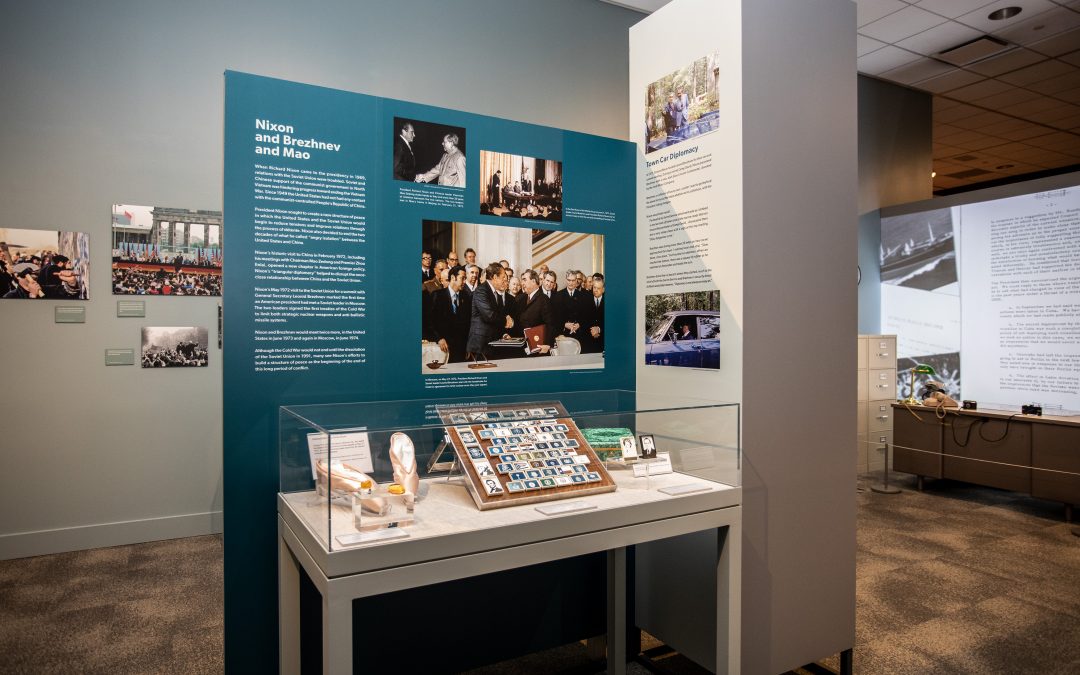Nine presidents of the United States bore the burden of leadership during the Cold War. During that same period the Soviet Union was led by six different men. The actions of these leaders as they pursued a path to peace helped define the Cold War.
Cold War: Soviets, Spies and Secrets features a collection of diplomatic gifts and other Cold War era artifacts on loan from the collections of the Dwight D. Eisenhower Presidential Library, John F. Kennedy Presidential Library, Lyndon Baines Johnson Library and Museum, Ronald Reagan Presidential Library and Museum, George H.W. Bush Presidential Library and Museum as well as rarely-displayed artifacts from the Richard Nixon Presidential Library and Museum.
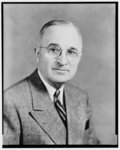
Harry Truman
When World War II ended, Europe became an ideological battleground between the Soviet communists and the nations of the free west. At the beginning of the Cold War, President Truman pledged that the United States would help any nation resist the spread of communism. This policy of containment became known as the Truman Doctrine. President Truman enacted the Marshall Plan to provide aid to Europe’s post-war recovery. This plan supported the rebuilding of a free and democratic Western Europe. On June 24, 1948, the Soviets started a blockade in Berlin to drive the U.S., Great Britain and France out of the divided city. President Truman immediately made clear that the United States would not be driven from West Berlin. “We stay in Berlin —period, “ Truman declared. The United States launched “Operation Vittles” to deliver food, fuel and other provisions to West Berlin. Frustrated by the success of the airlift, the Soviets lifted the blockade on May 12, 1959 and West Berlin remained free.
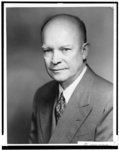 Dwight Eisenhower
Dwight Eisenhower
President Eisenhower hosted his Soviet counterpart, Nikita Khrushchev, in September 1959 for two days of meetings at Camp David. A joint statement was released at the end of the meetings in which the two leaders “agreed that all outstanding international questions should be settled not by the application of the force but by peaceful means through negotiation.” The meetings were applauded as creating a new “Spirit of Camp David” signaling a reduction in tension between the two superpowers. Khrushchev extended an invitation for Eisenhower to visit the Soviet Union in the spring of 1960 but the invitation was withdrawn shortly after an American U-2 spy plane was shot down by Soviet Air Defense Forces on May 1, 1960.
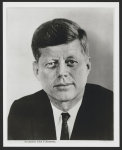 John F. Kennedy
John F. Kennedy
President Kennedy held a summit with Soviet leader Nikita Khrushchev in Vienna, Austria in June 1961. This meeting was just weeks after the failed U.S.-backed invasion of Cuba at the Bay of Pigs to overthrow Cuba’s communist dictator, Fidel Castro. Kennedy went to Vienna to prove the failure in Cuba was not a sign of American weakness, but Kennedy shared with James Reston of the New York Times “[Khrushchev] just beat the hell out of me. It was the worst thing in my life. He savaged me.” In October 1962, tensions between the United States and Soviet Union rose when aerial surveillance revealed that the Soviets were getting ready to deploy ballistic missiles in Cuba. After a 13-day stand-off, during which the two powers seemed to be on the brink of nuclear war, the crisis ended. The Soviets agreed not to station nuclear missiles in Cuba and the United States agreed not to invade Cuba again and to remove missiles it had stationed in Turkey near the Soviet border.
Lyndon Johnson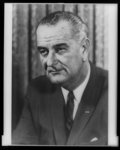
President Johnson continued the policies of his predecessors to contain the spread of communism in Southeast Asia. Under his presidency, the Vietnam War continued with the United States supporting the South Vietnamese against the Soviet-supported communist North Vietnamese. In January 1967, President Johnson signed the Outer Space Treaty with Soviet Premier Aleksei Kosygin, banning nuclear weapons in earth orbit, on the moon or other planets, or in deep space.
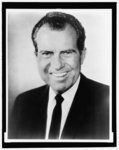 Richard Nixon
Richard Nixon
Richard Nixon became president in 1969 when relations with the Soviet Union were troubled. Soviet support of the communist government in North Vietnam was hindering an end of the Vietnam War. Additionally, the United States had not had any contact with the communist-controlled People’s Republic of China since 1949. Nixon sought to create a new structure of peace in which the United States and the Soviet Union would reduce tensions and improve relations through the process of détente. Nixon also decided to end the two decades of what he called “angry isolation” between the United States and China. Nixon’s historic visit to China in February 1972 opened a new chapter in American foreign policy. Nixon’s “triangular diplomacy” disrupted the once-close relationship between China and the Soviet Union. Month later in May 1972, President Nixon visited the Soviet Union for a summit with Leonid Brezhnev. This was the first time an American president had met with a Soviet leader in Moscow. The two leaders signed the first treaties of the Cold War to limit both strategic nuclear weapons and anti-ballistic missile systems. Nixon and Brezhnev met two more times, in the United States in June 1973 and again in Moscow in June 1974. Although the Cold War would not end until the dissolution of the Soviet Union in 1991, many see Nixon’s efforts to build a structure of peace as the beginning of the end of this long period of conflict.
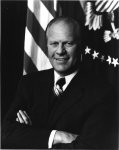 Gerald Ford
Gerald Ford
President Ford continued President Nixon’s policy of détente with the Soviet Union. In 1975, Ford joined Soviet leader Leonid Brezhnev and the heads of other European nations to sign the Helsinki Accords, which recognized the existing boundaries of European countries established at the end of World War II. Ford and the Soviets agreed in November 1974 to the Vladivostok Accords, which provided a general outline for a successor treaty to SALT I (Strategic Arms Limitation Treaty).
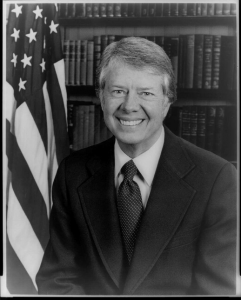 Jimmy Carter
Jimmy Carter
President Carter signed the Strategic Arms Limitation Treaty (SALT II) with his Soviet counterpart Brezhenv to further limit the number of intercontinental ballistic missiles and submarine-launched ballistic missiles.
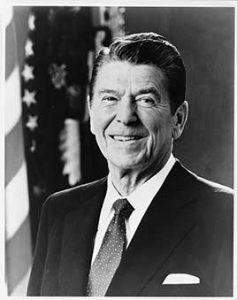 Ronald Reagan
Ronald Reagan
When Ronald Reagan became president in 1981, Leonid Brezhnev was still the leader of the Soviet Union. Over the course of the next four years, Brezhnev and his two successors, Yuri Andropov and Konstantin Chernenko, died in office. It wasn’t until Mikhail Gorbachev took office on March 11, 1985, that Reagan was able to build a relationship with his Soviet counterpart. President Reagan’s first summit with Gorbachev was in November 1985. At their second summit in Reykjavik in 1986, the two leaders came close to an agreement to eliminate each country’s nuclear arsenals by the year 2000. The agreement collapsed when Gorbachev would not agree unless Reagan also agreed to limit research on his Strategic Defense Initiative to the laboratory. Gorbachev later wrote that the summit “actually gave an impetus to reduction by reaffirming the vision of a world without nuclear weapons and by paving the way toward concrete agreement on intermediate-range nuclear forces and strategic nuclear weapons.” In 1987, Reagan and Gorbachev signed the Treaty on Intermediate-Range Nuclear Forces (INF) to eliminate all intermediate and short-range nuclear ballistic missiles, with verification.
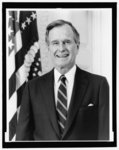 George H.W. Bush
George H.W. Bush
President Bush took office at the beginning of the end of the Cold War. In 1989, demand for freedom in the Soviet Union began to grow and by the end of that year the Berlin Wall was torn down. President George H.W. Bush and Soviet President Mikhail Gorbachev signed the Strategic Arms Reduction Treaty (START) in July 1991 as a commitment for each country to reduce nuclear arms by a third. In December of 1991 President Gorbachev resigned and by the end of the year the Union of Soviet Socialists was officially dissolved.

